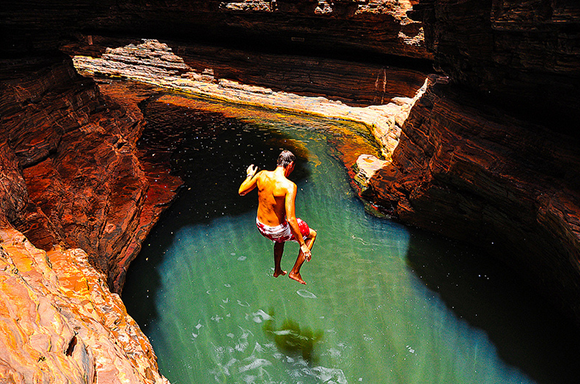Tourist destinations need activities and events to attract visitors
Tourism is a key economic driver in Western Australia, generating more than 94,000 jobs and injecting $9.3 billion into the WA economy in 2014 (Tourism WA Fast Facts 2014). Regional tourism is a large contributor with many tourists visiting Western Australia specifically to experience country and outback WA. Most local government authorities understand the importance of attracting visitors to their areas to get a share of this spending. But many aren’t sure about the kinds of activities to offer to engage visitors and show off their town or region.
Tourism is about creating experiences
Visitors want experiences – of the life, the history, the people, the natural environment, the food & produce and the culture of the places they go. One of the best ways to create these experiences is through the development of tourism trails. These trails can create a reason to visit, give an itinerary of interesting places to visit and induce them to spend more time (and money) in your region or town.
What’s involved in creating a tourist trail?
Creating a trail takes planning and resources. There are three main stages – planning, construction, and ongoing maintenance, management and marketing. Our discussion here primarily focuses on the planning stage.
Identify interesting features in your area that could become a trail.
- What is unique about your area? Is it history, food & produce, natural features, the culture, local flora and fauna, industry, recreation, adventure etc.
- Use your imagination. Don’t underestimate what you have to offer – for many visitors what you take for granted everyday is part of the experience they are looking for.
- If you feel your Council area (especially rural shires) doesn’t have enough to offer, consider partnering with neighbouring shires to create a regional experience. The Wheatbelt Way in the North Eastern Wheatbelt is a good example of this kind of collaboration.
- Get inspiration from successful trails in other areas. Will trails like these works in your area?
Identify the kind of trail experience you can create.
Trails can vary from multi-day drive or walk trails to short around town heritage walks. They can revolve around physical activities like hiking or mountain biking. You could have multiple trails catering to different abilities, time available, budgets, activities, ages and interests.
- What kind of trail do your area’s features and assets best support?
- What visitors are you trying to attract? Day trippers, young adventurers, grey nomads?
Determine if the trail is feasible
- What is the theme or main focus?
- What is the overall concept?
- Are there enough interesting features, locations and activities to create the experience you’re aiming for?
- Walk, drive and investigate.
- Are there experts you can talk to about the feasibility of the concept before investing too much?
Determine who needs to be involved
- What organisations need to be involved and can help to resource the trail’s creation, promotion and maintenance?
- Are there approvals or land ownership issues to sort out?
- Who will coordinate the project and take charge?
Determine what resources you need to create the trail
- Depending on the type of trail you create, the route will need to be planned and mapped. Key features and locations for activities, learning and interpretation should be identified.
- What funding can be used to create the trail? Are there grants available to assist?
- What organisations need to be involved and can help to resource the trail’s creation, promotion and maintenance?
- Who will coordinate the project and take charge?
- Are consultants needed to help with planning, design, construction and marketing?
Know what you want to achieve.
- What are the benefits you want for the community from the trail?
- Will these benefits exceed the costs of planning construction and ongoing maintenance?
- Create a business plan that includes how you will market, maintain and manage the trail.
Create a design & construction plan
During the planning stage a design and construction plan is prepared, costed and committed to.
- Design considerations include: emergency access; whether the trail will be single use or shared use, linear or looped; whether the route of the trail will provide the best possible experience, but avoid sensitive areas; possible congestion and flow/direction of trail-users.
- Construction considerations will look at the surface materials, facilities, amenities and infrastructure needed. Things like benches, furniture, toilets, lighting, signs can make or break a trail experience.
- Signage is especially important – wayfinding, interpretive and facilities signage are likely to be essential.
Create a marketing & maintenance plan
It is essential that marketing and maintenance is prepared, costed and committed to at the planning stage so a budget can be set for these activities. Even great trails can fail or become idle because of a lack of planning.
Key elements of this plan will include:
- governance arrangements and management body
- trail maintenance and risk assessment
- renewal of infrastructure
- marketing and promotion that considers how to encourage local users and visitation from beyond the immediate community, e.g. creating a website with maps, distributing brochures, organising an event, preparing media materials and advertising
- monitoring and evaluation
- budgets, including revenue from grants or sponsors
- expenses for maintenance and promotion
“Signage needs to be viewed as the final link in destination marketing and product development.”
Thinking creatively about your marketing
When you’re planning your marketing and maintenance, you can start to think creatively about how you can maximise the number of visitors and help them get the most of out of their visits.
Creating a brand & identity
A brand and identity is important as it will help to position your trail and identify its key themes, the landscape and the history. Naming is also important – a good name and positioning statement will attract people’s interest and encourage them to look further at what you have to offer. A good example is The Trail of the Tin Dragon in Tasmania.
Encouraging people to visit your trail
Can your trail link to an existing trail network in your region?
Can you give-away a night’s free camping to visitors to your town? This may get them to stay and spend money.
Can you encourage local businesses to create service for the trail? Eg: drop-offs & pick-ups, packed lunches, accommodation?
Can you tie in with caravan clubs and outdoor recreation groups?
Can you do cross promotion through regional visitor centres?
Get feedback & encourage social sharing
Once your trail is established it’s important to regularly survey trail users. Find out what they liked, what didn’t live up to their expectations and can be improved. By getting regular feedback you can action suggestions to improve the visitor experience and show that you care and value the visitor’s feedback.
Don’t overlook social media, as part of your trail planning. Good reviews and images on social media will help word of mouth marketing and share good experiences with potential visitors. Encourage people to comment on your facebook page and upload images of their experiences to your instagram site. A good example is Australia’s Coral Coast ACC Facebook ACC Instagram
Need help to create a tourist trail?
Wayfound specialises in creating all aspects of tourism experiences, including;
• Trail planning
• Business plan and grant applications
• Trail Design
• Trail infrastructure
• Trail marketing
Contact [email protected] or on 08 9430 4177 to discuss your project.




